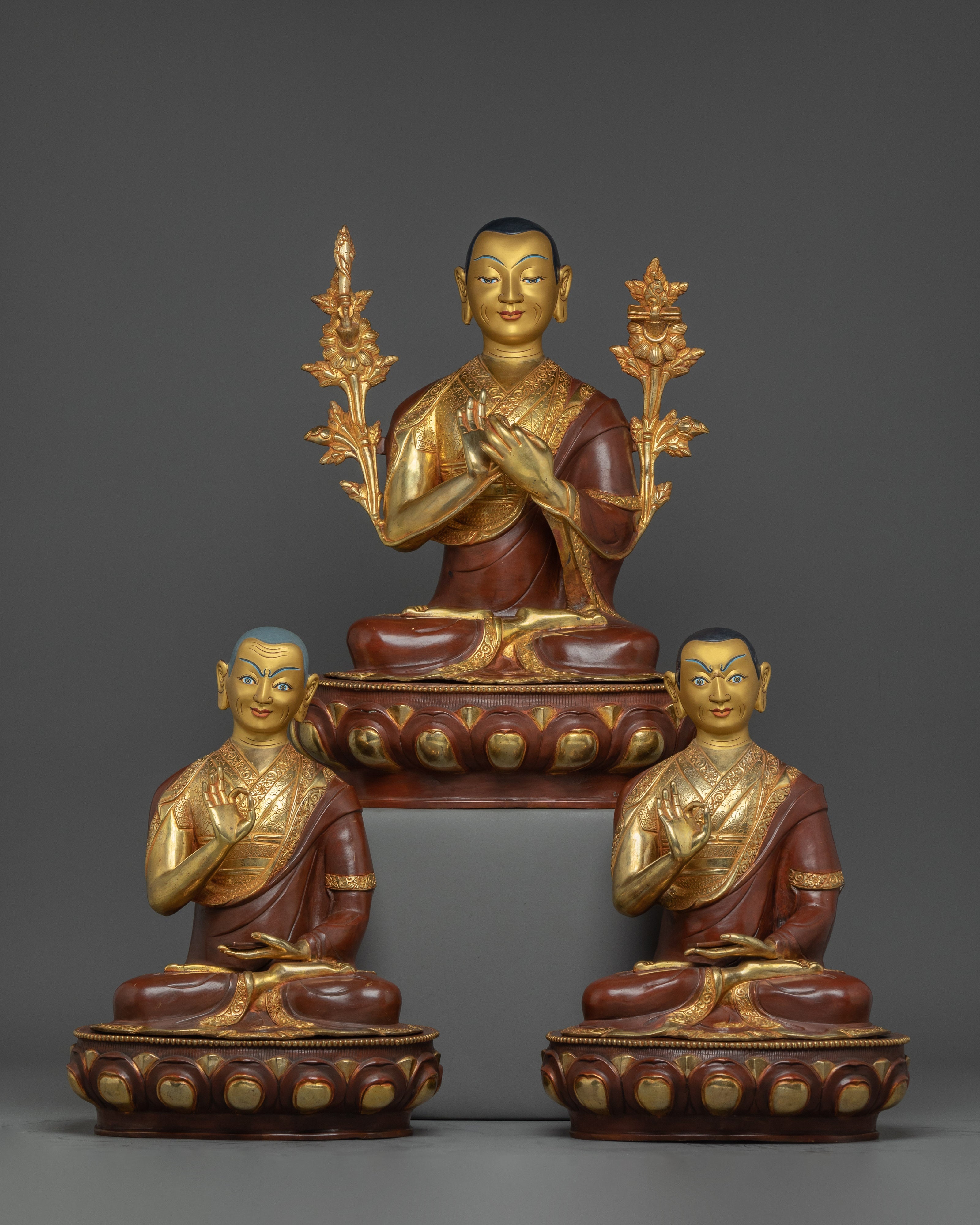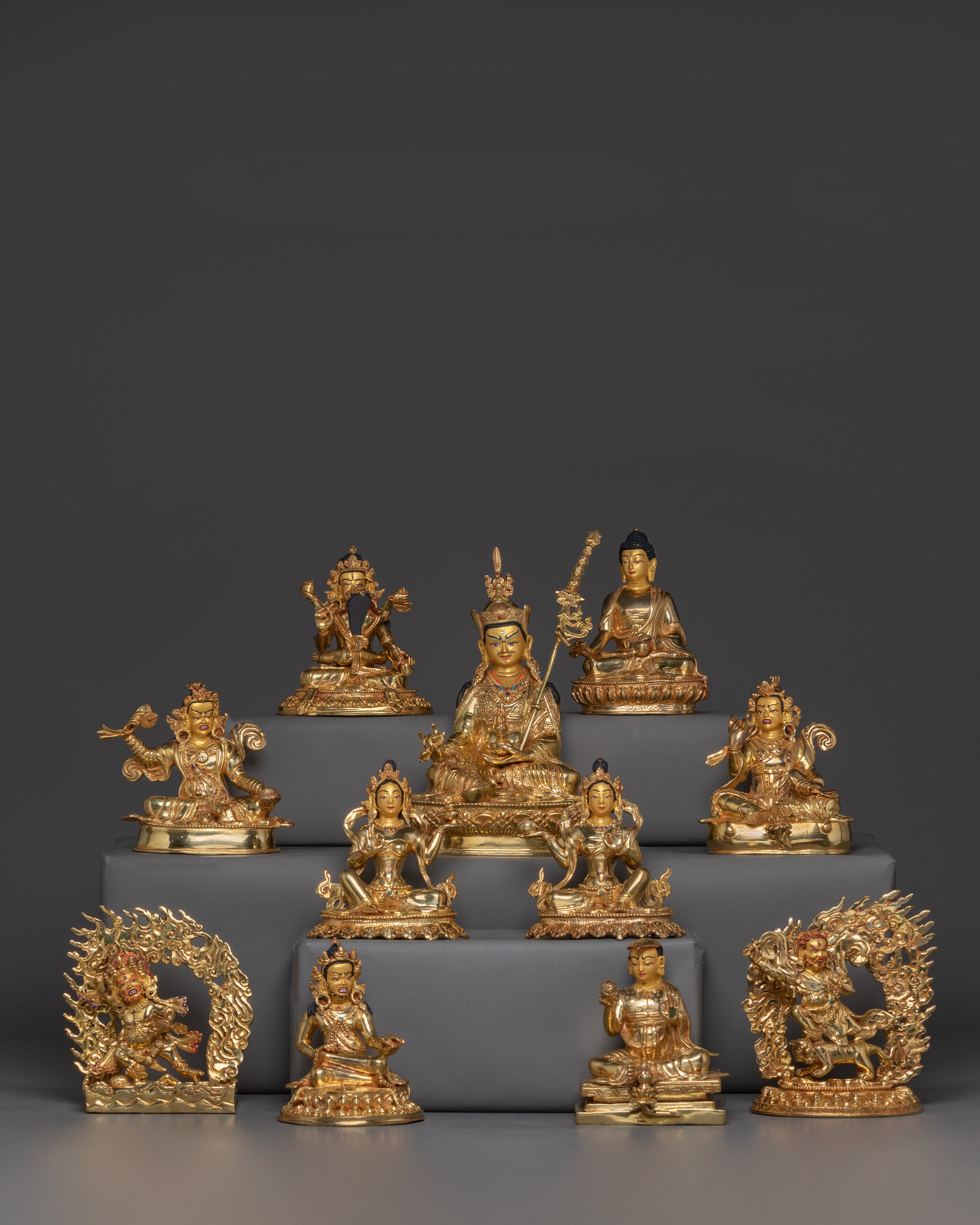Statue Set
158 products
Showing 1 - 24 of 158 products
Statue Set: Manifesting the Diversity of Buddhist Deities
Background and Significance: A key component of Buddhist devotion and practice is several Buddha statues. They demonstrate the variety of the Buddhist pantheon, with every deity representing distinct traits and characteristics. Crucial to devotional rites and ceremonies, these statues serve as a visual depiction of enlightened beings and their attributes.
Attributes and Use:
- Diversity of Deities: Typically, a collection of statues features images of bodhisattvas, enlightened beings, and various Buddhist deities. Every deity represents a different attribute, virtue, or facet of the spiritual path.
- Focus on Devotion: These sculptures are used by practitioners and devotees to honor the gods, make sacrifices, and ask for their favors. People can develop a close relationship with many facets of the spiritual path with this package.
- Protection and Guidance: It is thought that the numerous deities in the set offer protection and guidance in a range of life circumstances. Practitioners facing extraordinary obstacles or goals may seek assistance from specific deities.
- Meditation and Visualization: By helping practitioners connect with the attributes and virtues that each deity represents, the sculptures support meditation and visualization techniques. The experience of meditation can be enhanced by visualizing the gods.
- Rituals & Ceremonies: Buddhist festivals, rituals, and ceremonies frequently use statue sets. Offerings and prayers are made to the gods during these occasions to enlist their help and presence.
- Aesthetic and Artistic Value: These statue sets are valued for their artistic and aesthetic features and religious and spiritual significance. They frequently showcase the artistry and cultural legacy of the area where they are made.
Variations and Cultural Context: A statue set's specific gods may differ according to local traditions, Buddhist traditions, and the collection's intended use. For instance, a set in Zen Buddhism would have Bodhidharma and Manjushri, while a set in Tibetan Buddhism might have figures like Avalokiteshvara and Green Tara. Traditions also vary in how the statues are arranged and presented.
To sum up, a collection of statues featuring many Buddhist deities provides a concrete and illustrative depiction of the various attributes and moral traits included in the Buddhist path. In devotional practices, meditation, and rituals, these sets are essential tools that enable practitioners to connect with many enlightened beings and ask for their blessings and assistance.
























